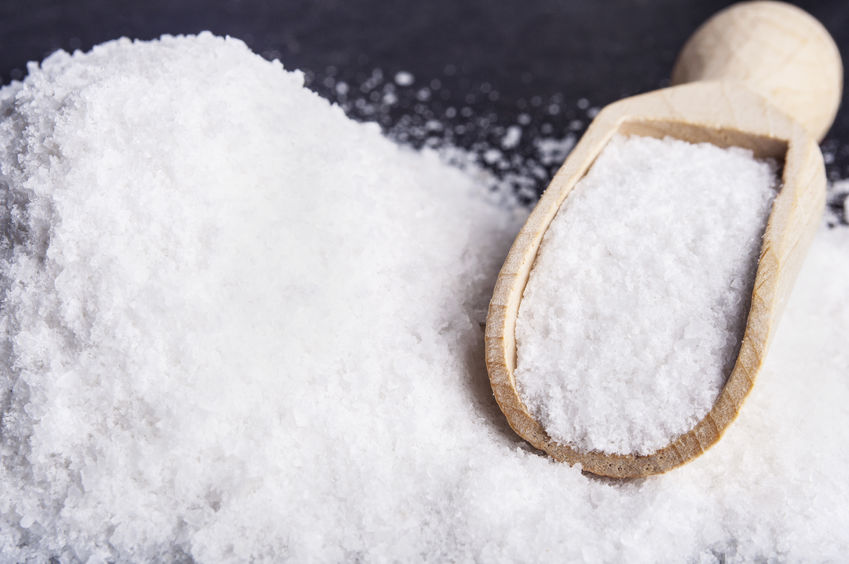What is fin rot?
Fin rot is a disease that is common in bettas that are stressed due to overcrowding, poor water quality or lack of a heater in the tank. It is caused by bacteria in the water.The most common symptoms include ragged looking fins and/or holes in the fins. The edges may become red and bloody or fuzzy and white, and the fins will appear more raggedy and damaged as time passes.
Treating fin rot with aquarium salt
Severe cases of fin rot (fins just seemingly melting away and falling off in big pieces or when the rot is close to the body) should always be treated with an antibacterial fish medication like Sera Baktopur Direct or Tetracycline. Products like Melafix, Pimafix and Bettafix do not cure fin rot and may actually make it worse.

Unfortunately, heavy medications have a lot of negative side effects like the possibility of bacteria eventually becoming resistant and the fish becoming extra stressed. Luckily, less severe rot (slightly ragged looking fins) can be treated with a combination of clean water and aquarium salt, which has way less negative side effects. Try to keep an eye on your fish at all times to catch any cases of rot before they get too bad – that way you can prevent having to use medication!
To treat a betta with fin rot using aquarium salt, transfer the fish, a heater and some hiding places like real/fake plants to a separate quarantine tank or tub with treated tap water of the same temperature as the water in the aquarium (be sure to give the fish some time to acclimate to the 100% tap water)! Set the heater to a temperature of around 77-78 F – any higher will make the rot progress more quickly, and any lower and it might be harmful to the fish.
Then take 1 tsp of aquarium salt per gallon of water for mild cases of rot and 2-2.5 tsp per gallon for moderate cases (so if the quarantine tank is 5 gallons, use 5 tsp of salt to treat mild rot). Predissolve the salt in a separate glass or jug. When the salt has dissolved, you can add it to the quarantine tank over the course of ~1 hour.
After 24 hours, change 100% of the water in the quarantine tank with treated tap water of the same temperature as before and with the same amount of salt as before. Don’t add 3 tsp of salt one day and another 3 the next day without changing the water! The amount of salt in the water is supposed to be the same all the time.
If you keep repeating this process for around a week and a half (any longer can cause organ damage in the fish), you will likely see some good improvement in your betta’s condition, and maybe even some fin regrowth! You can now carefully acclimate him back to his regular aquarium. Be sure to keep an eye on the fish after this, though! If it gets fin rot again, you may want to take another look at the tips to prevent fin rot below.
If the fish is getting worse very quickly or if it has not recovered after a week and a half, you’re probably dealing with a more persistent case of fin rot and you’re going to have to think about treating with medication. Usually, though, the salt and clean water work just fine!
Fin Rot Prevention
Fin rot is a very preventable disease. Keep stress levels low in your betta by:
1. Cycling the tank before you add a betta so it won’t be exposed to ammonia and nitrites
2. Doing at least a 25% water change a week in tanks that are bigger than 5 gal, and bigger water changes in aquariums that are smaller
3. Removing any uneaten foods from the tank immediately
4. Not keeping your betta with incompatible tank mates like guppies, goldfish, gourami, barbs, etc.
5. Not overstocking the tank (anything smaller than 10 gallons can probably only house 1 betta and nothing else)
6. Using a heater set to 77-83 F in your betta tank
7. Using a filter, but making sure it’s not too powerful
8. Not handling your betta when it’s not necessary
9. Providing your betta with plenty of hiding places like tall aquarium plants
If you’ve succesfully treated your betta for fin rot but fail to provide one of these things when it’s back in the main tank, the rot will likely come back. Be honest with yourself! Don’t overstock your aquarium and do regular maintenance. Your betta will love you for it!
Mari runs Aquariadise, an active blog dedicated to freshwater aquariums where you can find informative articles, aquarium photos, product reviews and updates of the author’s own fishkeeping projects. She currently owns 1 betta, a blue lace halfmoon male who lives in a 13 gallon aquarium.

